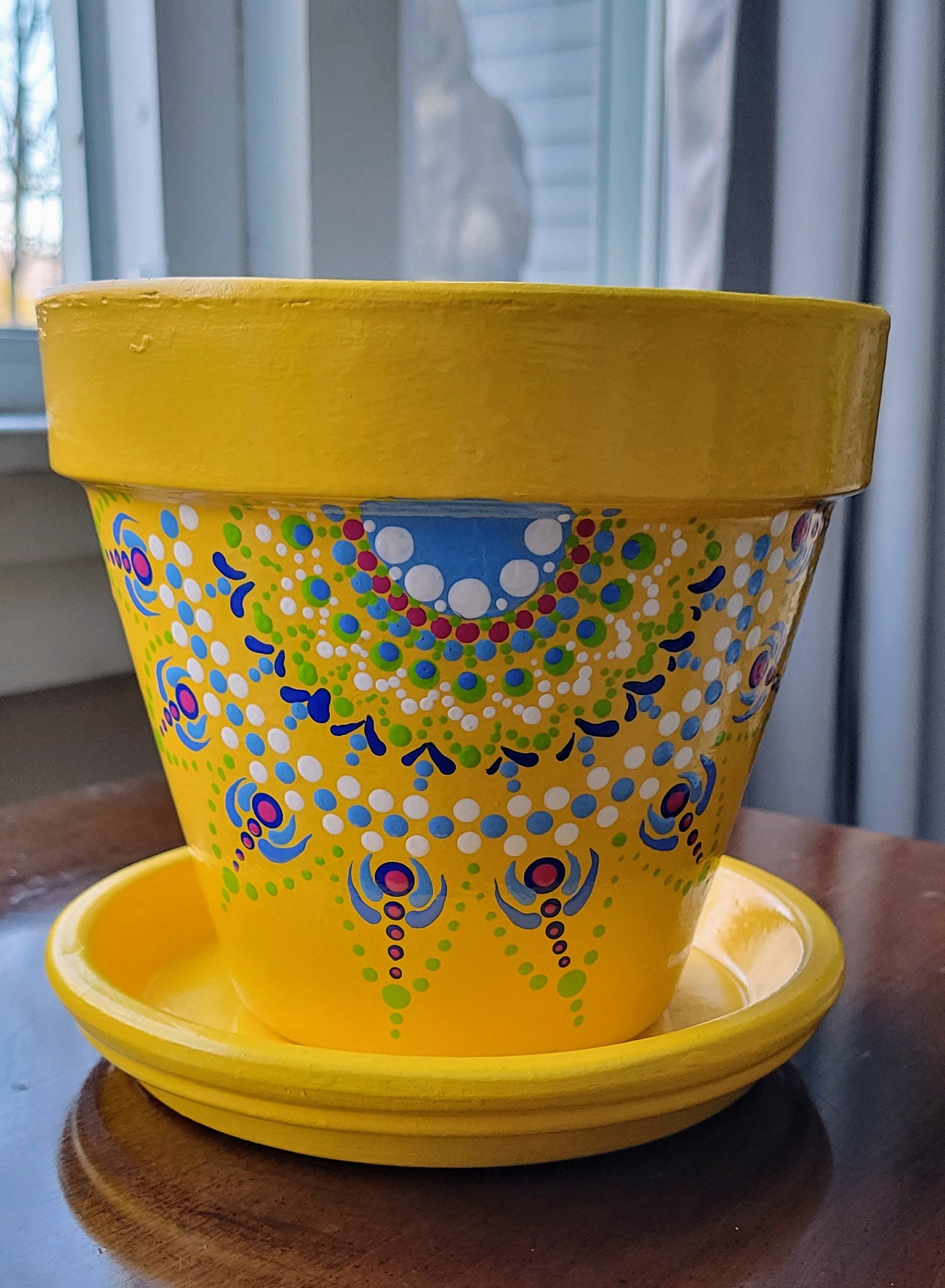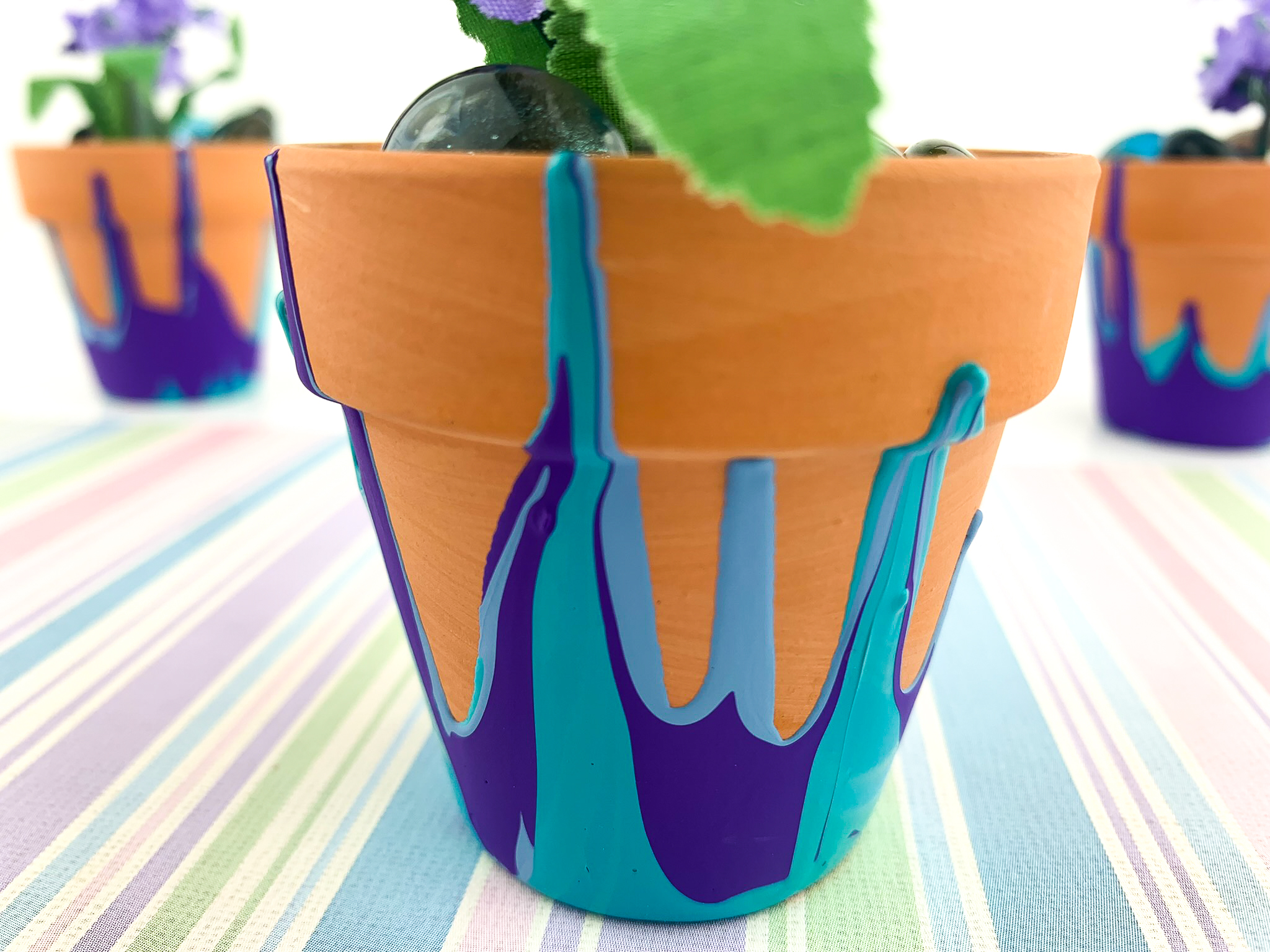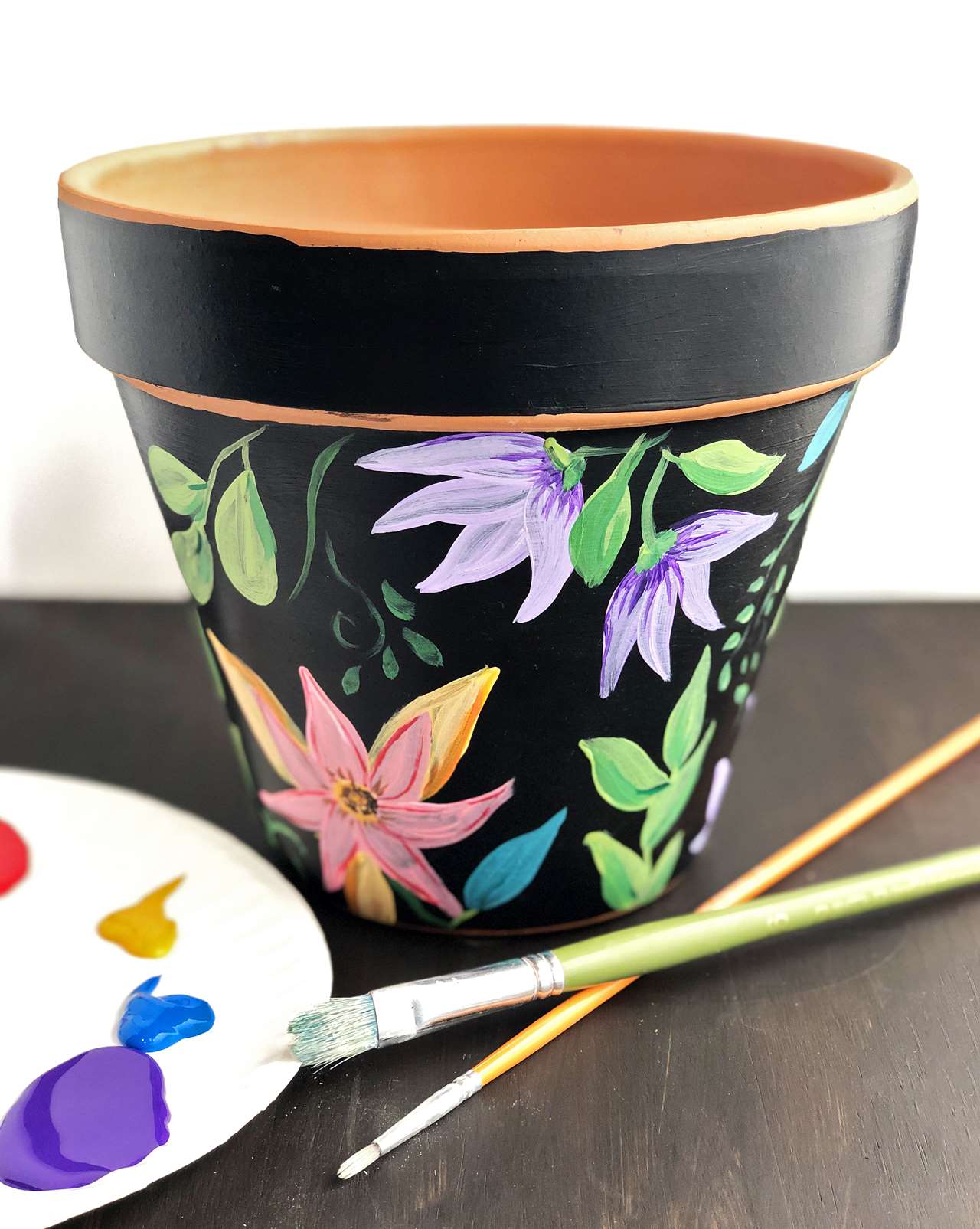Introduction: Transforming Your Garden with Brushstrokes of Color
Gardening enthusiasts know the joy of cultivating a vibrant outdoor haven, where nature’s palette comes alive in a symphony of colors and textures. One often overlooked yet impactful way to enhance the charm of your garden is through the art of painting flower pots. This creative endeavor not only adds personality to your green space but also provides a unique opportunity for self-expression. In this comprehensive guide, we delve into the world of colorful creations, equipping you with the knowledge and inspiration needed to transform ordinary plant containers into stunning works of art that will brighten up any corner of your garden.

Choosing the Right Materials: Foundations for Success
Before dipping your brush into the paint, it’s crucial to select the appropriate materials to ensure a long-lasting and visually appealing result. Start with a good-quality, weather-resistant paint specifically designed for outdoor use. Acrylic paints are a popular choice due to their durability, quick drying time, and extensive color range. Opt for pots made from materials that can withstand the elements and paint well, such as terracotta, ceramic, or plastic. Terracotta, with its porous surface, requires a primer before painting to improve adhesion. Remember to have a variety of brushes on hand—both large for base coats and small for intricate details—and don’t forget painter’s tape for clean lines and a drop cloth to protect your workspace.
Preparation is Key: Cleaning and Priming
A thorough cleaning of your pots is essential to remove dirt, debris, and any residue that might interfere with paint adhesion. Use soap and water for terracotta or plastic pots, and a gentle abrasive cleaner for glazed ceramics. Allow them to dry completely before proceeding. For terracotta, apply a coat of primer once dry; this step creates a barrier between the pot’s porous surface and the paint, promoting better coverage and longevity. While priming isn’t necessary for all materials, it significantly enhances the finished look and durability, especially for detailed or multi-layered designs.

Design Inspiration: From Whimsical to Classical
The beauty of painting your own flower pots lies in the endless design possibilities. You may choose to reflect your personal style, the theme of your garden, or the changing seasons. For a whimsical touch, consider painting pots with cheerful polka dots, stripes, or even cartoon characters. If you’re after a classic aesthetic, floral motifs inspired by Monet’s garden or delicate Japanese cherry blossoms can add elegance. Geometric patterns in bold, contrasting colors offer a modern twist, while ombre effects provide a subtle yet captivating gradient. Sketch out your ideas beforehand or use stencils for precise application, allowing your creativity to flourish.
Techniques for Stunning Results: Layering, Blending, and Textures
Mastering a few simple painting techniques can elevate your flower pots from ordinary to extraordinary. Layering different shades of the same color family creates depth and dimension, while blending hues seamlessly can mimic the soft transitions found in nature. Dry brushing, where you use a nearly dry brush with minimal paint, can add a weathered, vintage look to your pots. Experiment with adding texture by incorporating sand, beads, or even broken pieces of ceramic for a mosaic effect. Don’t shy away from using sponges, stamps, or even old toothbrushes for splatter effects, adding a playful touch to your designs.

Finishing Touches and Sealants: Protecting Your Artwork
Once your masterpiece is complete, allow it to dry thoroughly according to the paint manufacturer’s instructions. This is crucial to prevent smudging or peeling. To safeguard your painted pots against the elements, apply a clear, weatherproof sealant. Choose a spray-on or brush-on sealer depending on your preference and the complexity of your design. Sealants not only preserve the colors but also make cleaning and maintenance easier. Be mindful that some sealants may give a glossy finish, which could alter the appearance of your artwork, so test a small area first if you prefer a more natural or matte look.
Displaying Your Creations: Complementing Your Garden’s Aesthetics
The final act in this creative journey is the placement of your newly adorned pots. Consider the interplay of colors between the pots, plants, and the surrounding landscape. Group complementary or contrasting pots together for a striking display, or create a harmonious blend by echoing the hues of your flowers in the pot designs. Hanging baskets or wall-mounted pots painted in vibrant patterns can add visual interest to vertical spaces. Remember, the placement of your pots should enhance the overall ambiance of your garden, turning it into a living canvas that evolves with the seasons.

Maintaining Your Painted Pots: Longevity and Care Tips
To ensure your painted pots continue to brighten your garden year after year, proper care is vital. Regularly inspect them for signs of wear, particularly around the base where moisture can accumulate. Clean them gently with a soft cloth and mild detergent when needed, avoiding abrasive cleaners that might scratch the surface. Periodic reapplication of a protective sealant, especially after harsh winters or summers, will help maintain their vibrancy and durability. Lastly, remember that while painted pots are beautiful, they may not be suitable for all plants. Succulents and cacti, for instance, thrive in unglazed pots that allow for better drainage, so choose your plant-pot combinations wisely.
Incorporating Lighting Elements:
To elevate your handmade pots into functional art pieces, consider integrating lighting elements. For outdoor spaces, solar-powered lights embedded within the pots can illuminate walkways or highlight featured plants after dusk, creating a magical ambiance. Indoor pots can be transformed into statement pieces with the addition of LED strip lights hidden along the base or inside translucent glazes, casting a warm glow and accentuating the textures of the pot.

Conclusion: Cultivating Joy Through Colorful Creations
Transforming plain flower pots into vibrant works of art is not just a weekend DIY project—it’s a journey of self-expression and a celebration of the beauty that exists in the smallest details of our surroundings. By thoughtfully selecting materials, carefully preparing surfaces, exploring diverse design inspirations, and mastering various painting techniques, you can create a garden that reflects your unique taste and personality. These colorful creations serve as a testament to the power of creativity, enhancing not just the aesthetics of your outdoor space but also nurturing a deeper connection with nature. So, grab your brushes, let your imagination soar, and watch as your garden blooms with newfound life and color.
